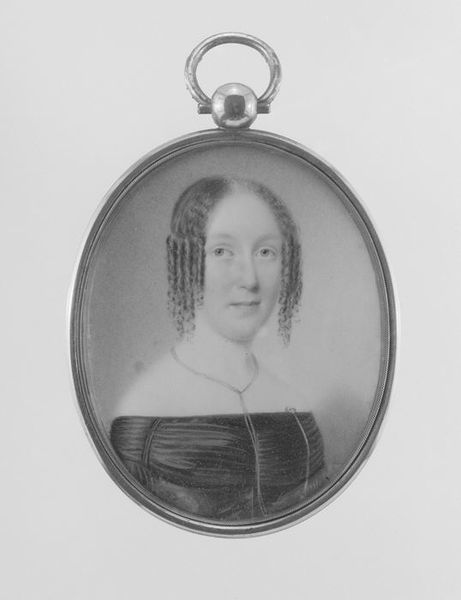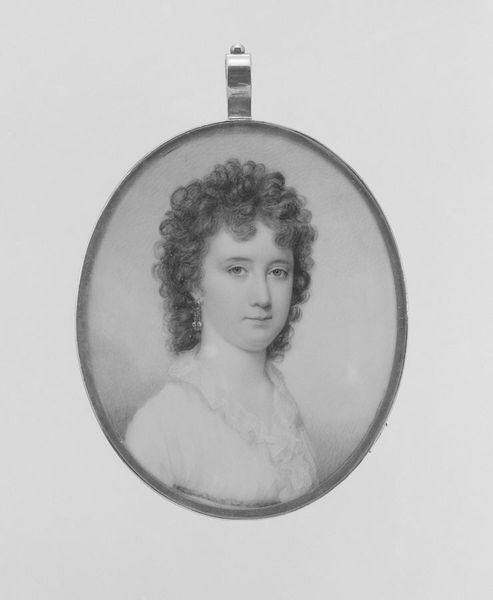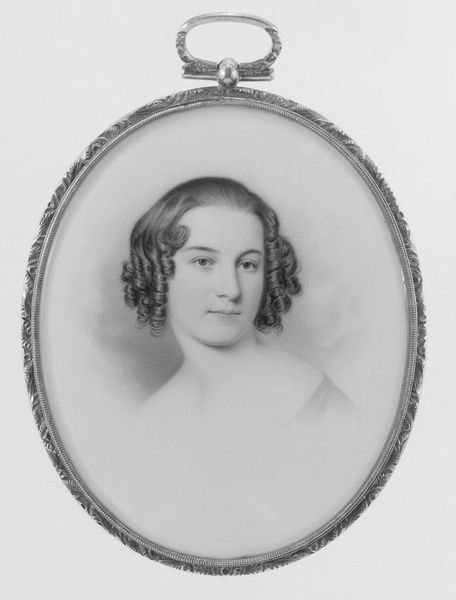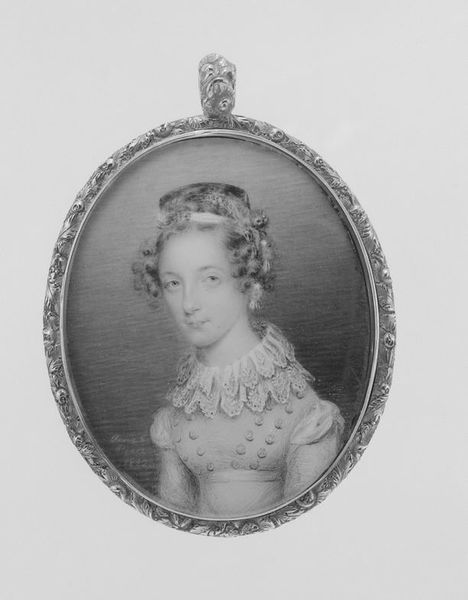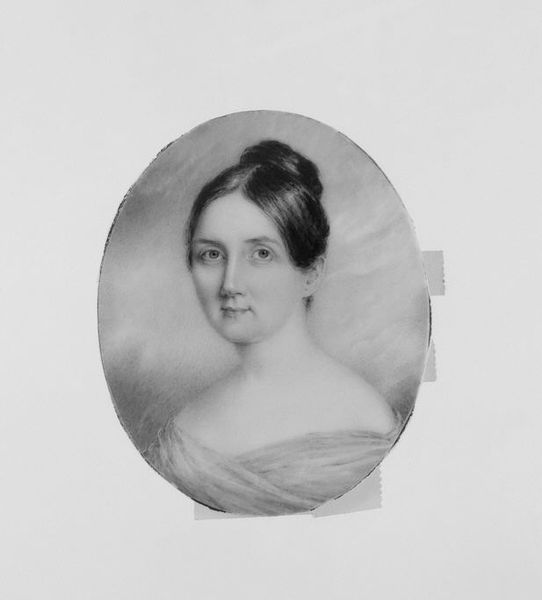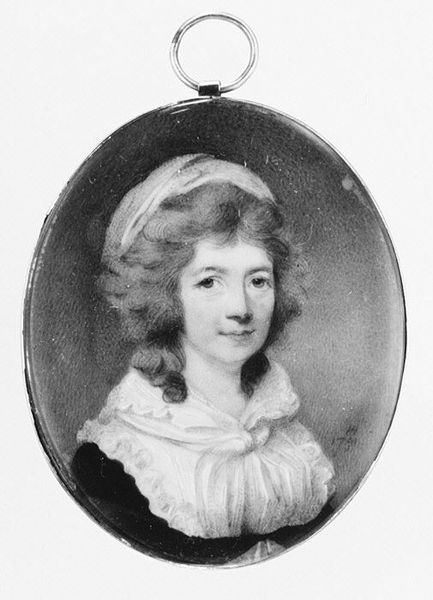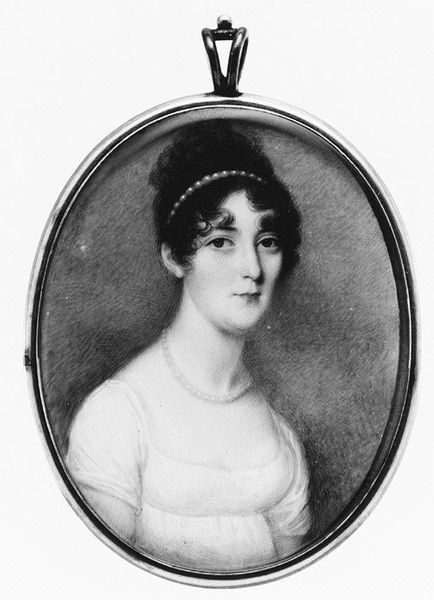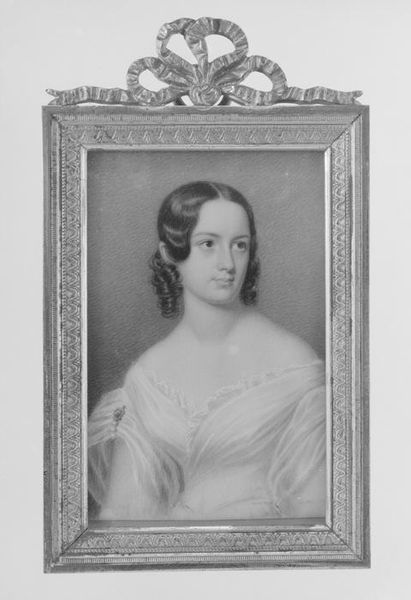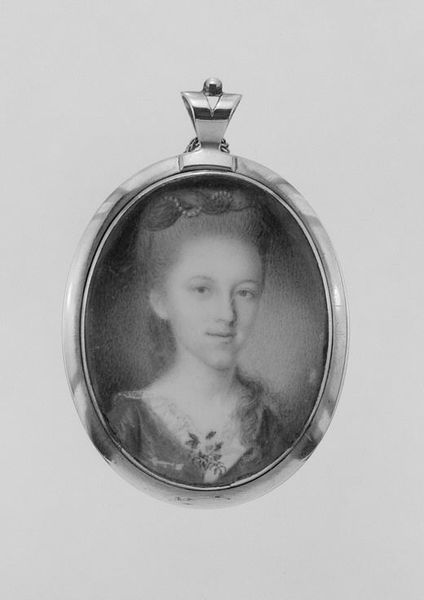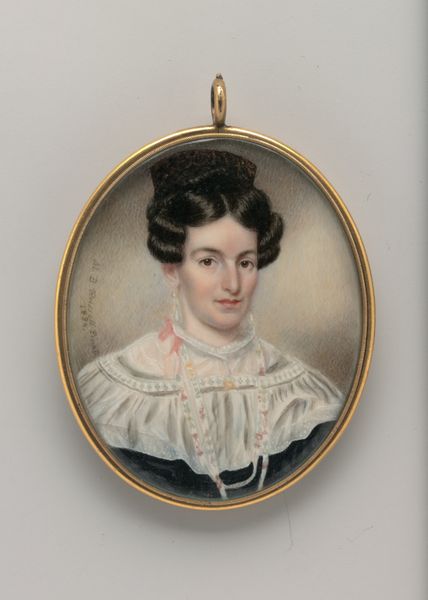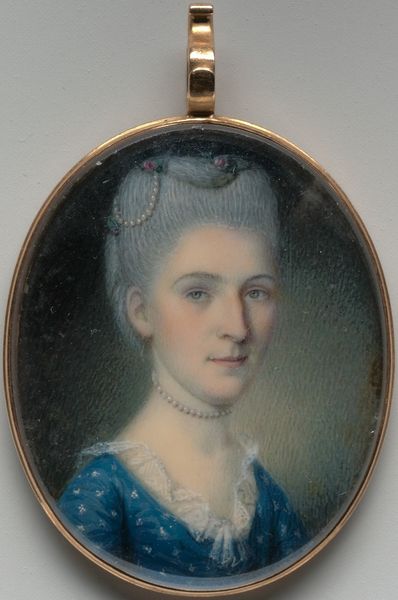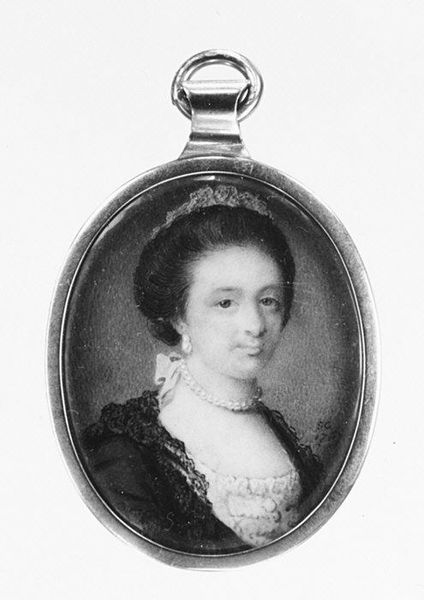
painting
#
portrait
#
neoclacissism
#
portrait
#
painting
#
miniature
Dimensions: 2 1/4 x 1 7/8 in. (5.7 x 4.8 cm)
Copyright: Public Domain
Curator: Ah, here we have Robert Fulton's "Portrait of a Lady," believed to have been completed sometime between 1782 and 1788. You can find it nestled amongst the Met's collection. It’s a painting, a miniature to be precise. Editor: My goodness, it’s like holding a tiny window into another time. She has such an ethereal quality, almost a melancholy hiding in those eyes. There's a vulnerability there despite the formal presentation. Curator: Indeed. These miniatures were intensely personal objects. Often worn as jewelry or kept close, they acted as keepsakes, tokens of affection, and signifiers of status, circulating within elite social networks. The Neoclassical style evident here, emphasizing simplicity and order, reflects broader Enlightenment values influencing art and society at the time. Editor: That’s fascinating. I imagine someone wearing that close to their heart. Is the stark, almost severe lighting intended to project that austere aesthetic that became associated with moral virtue? Yet, her wispy tresses betray the rigor, no? Curator: The composition is designed for intimacy but is still quite formal. Fulton cleverly negotiates that tension. These works were, after all, embedded in social performance, constantly mediating personal sentiment and public display. A constant balancing act, that era. Editor: What strikes me is the craftsmanship – that delicate lace and wispy plumes of hair suggest something beyond technique. They're a visual embodiment of the subject, delicate but bold, isn't it? The sitter almost gazes directly at me with that composed stillness. Curator: Certainly, a testament to both the skill of the artist, the societal context that gave the work meaning, and a lasting trace of its existence. Thank you for offering a more intimate reflection of its importance. Editor: It makes me feel so many human things even after so many centuries have passed, it will linger with me for quite some time to come. Thank you for highlighting how deeply rooted in social conditions our artworks really are!
Comments
No comments
Be the first to comment and join the conversation on the ultimate creative platform.
